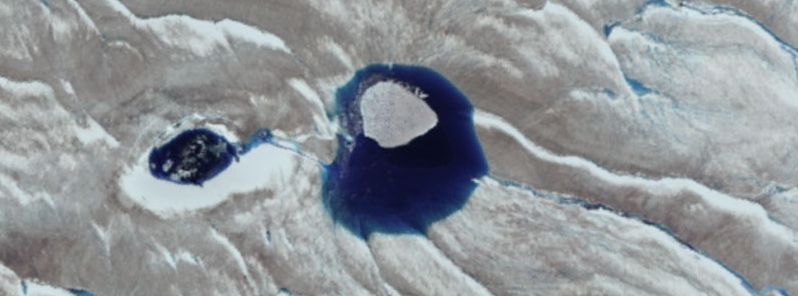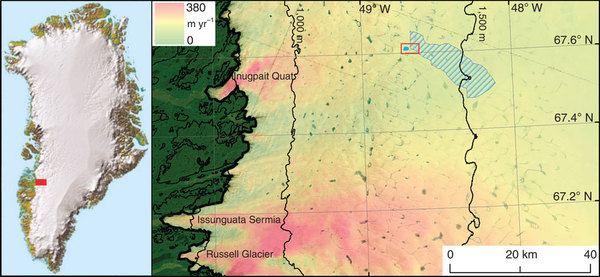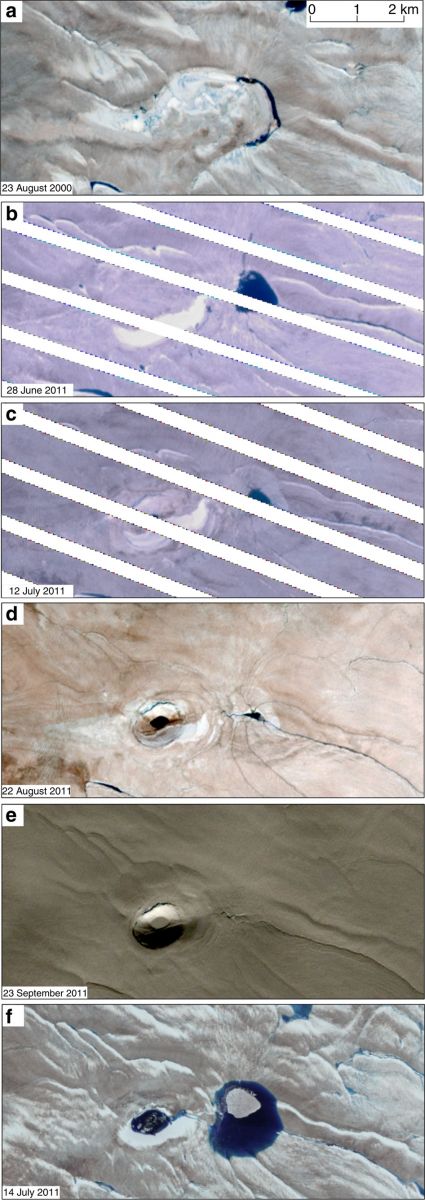Water flow paths from Greenland’s subglacial lake revealed

A research team led by Dr. Steven Palmer from the University of Exeter has studied the water flow paths from a subglacial lake under the Greenland ice, and discovered that water was drained from the lake through a subglacial tunnel. The study also revealed that a similar event happened in 1995, which implies the lake in question fills and drains on a periodical basis. Research results, which put the impact of climate change on subglacial lakes in new perspective, were published in Nature Communications on October 9, 2015.
Dr. Steven Palmer and his team have studied the water flow paths from a subglacial lake under the Greenland ice, which drained beneath the ice sheet in 2011.
New research has put the impact of climate change on subglacial lakes, found under the Greenland ice sheet, in a new perspective. It has for the first time revealed how the water was drained from the lake via a subglacial tunnel. By studying the satellite observations the scientists discovered that a similar event also took place in 1995, which suggests the lake is filling and draining periodically.

Outline of collapse basin (blue polygon), and supraglacial catchment (blue hatching) shown in relation to the western margin on the Greenland ice sheet. Wintertime ice flow and contours of ice sheet surface elevation intervals are also shown. Image credit: Steven Palmer et al, 2015.
"Our research reveals details about the plumbing system beneath the Greenland ice sheet, which is important because the configuration of that system has an impact on the flow speed of the overlying ice," Dr. Steven Palmer, from Geography at the University of Exeter, explained.
The ice sheet response to draining subglacial lakes has previously been observed in Antarctica, however, this is the first time that a similar phenomenon has been found in Greenland. The difference is that, in contrast to Antarctic subglacial lakes which are sustained through melting of the ice sheet base, the subglacial lake in Greenland has been fed by surface meltwater flowing down a nearby moulin – a circular, vertical shaft found within a glacier.

Sequence of Landsat 7 and Landsat 8 optical imagery showing the formation of the collapse basin between 28 June 2011 and 12 July 2011 and its persistence to the present day. The missing lines in panels are due to the scan line corrector malfunction on Landsat 7. Image credit: USGS
"We have made the first observations of how the Greenland ice sheet responds to subglacial lake drainage, but more research is required to understand the long-term impacts of these events. It is possible that draining lakes act to release the pressure at the ice sheet base, meaning that if they drain more frequently in the future, they may actually result in slower ice sheet flow overall," Dr Palmer added.
Reference:
- "Subglacial lake drainage detected beneath the Greenland ice sheet" – Steven Palmer, Malcolm McMillan, Mathieu Morlighem" – Nature Communications (2015) – doi:10.1038/ncomms9408
Featured image: Landsat optical imagery showing the collapse basin on July 14, 2011. Image credit: USGS

Commenting rules and guidelines
We value the thoughts and opinions of our readers and welcome healthy discussions on our website. In order to maintain a respectful and positive community, we ask that all commenters follow these rules.